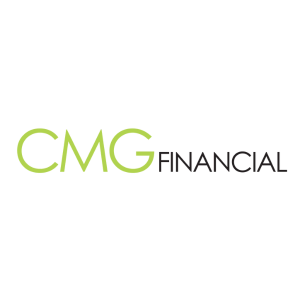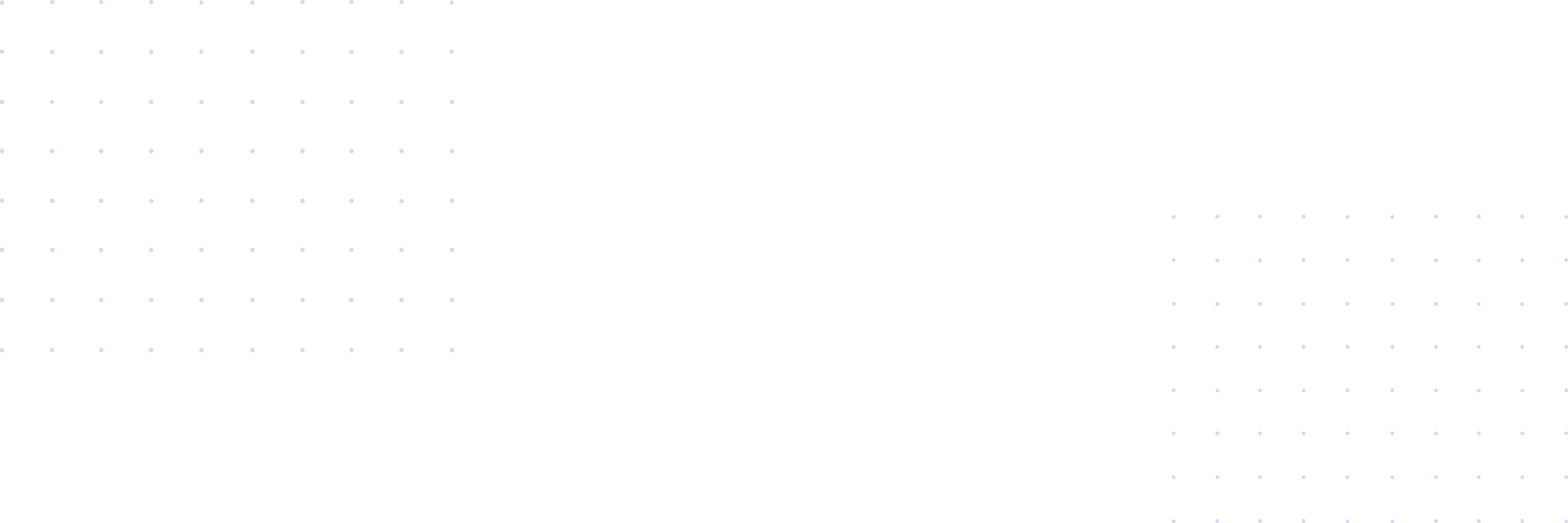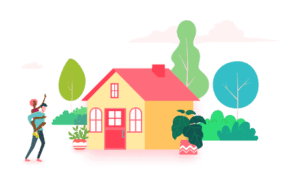Homeowners build up home equity with every mortgage payment, and appreciation also plays a factor. Home equity increases your wealth, but you can tap into it before you sell your home. HELOCs, home equity loans, and home equity investments are three methods you can use to access your home equity.
However, if you are old enough to qualify, a reverse mortgage is another useful way to receive your home equity. Some retirees use reverse mortgages to receive cash distributions and continue to afford the area instead of downsizing. This guide will cover how reverse mortgages work, along with their pros and cons.
Popular Reverse Mortgage Lenders

Read our comprehensive review to learn about CMG mortgage options, benefits, and how they can help with your home loans.
Introduction to Reverse Mortgage
Reverse mortgages are financial products that allow you to receive monthly payments from your home. These monthly payments get deducted from your home equity position and can help you stay at home instead of downsizing at retirement. Reverse mortgages have more restrictions and requirements than other financial products. For instance, you can only take out a reverse mortgage on your primary residence. Investors cannot use reverse mortgages on their investment properties to generate extra cash flow.
Reverse mortgages can help homeowners stay put after retirement instead of having to downsize. While downsizing can keep your expenses down, not everyone wants to go through that hassle and leave their neighborhoods behind.
Types of Reverse Mortgages
Homeowners can choose from several types of reverse mortgages. These are the available options.
Single-Purpose Reverse Mortgages
Borrowers can use these reverse mortgages to cover one lender-approved purchase. The lender may let you use a reverse mortgage to cover property taxes, repairs, and similar expenses. However, you must let the lender know how you intend to use the funds.
Home Equity Conversion Mortgages (HECM)
You can withdraw funds from your home equity each month to cover your living expenses and other costs. You can only use a reverse mortgage for your primary residence, and you must maintain the home and keep up with property taxes and homeowner’s insurance.
Proprietary Reverse Mortgages
These reverse mortgages give you a lump sum payout of your home equity. You don’t have to worry about repaying this balance as long as you fulfill the requirements. The debt gets repaid when the homeowner or their heirs sell the property.
Basic Requirements for a Reverse Mortgage
Wondering if you can receive a reverse mortgage? It’s not for everyone, and you need to fulfill these parameters to qualify.
Property Type
You can only take out a reverse mortgage on your primary residence. You can have investment properties while using a reverse mortgage for your primary residence. However, you cannot take out reverse mortgages on your investment properties. A primary residence is a home that you live in for the majority of the year.
Age
Reverse mortgages are financial products for retirees and older individuals. You must be at least 62 years old to qualify for a reverse mortgage. If you are younger than 62, you can still access your home equity through a home equity loan, HELOC, or home equity investment.
Home Equity
You must have equity in your home to use a reverse mortgage. More equity allows the monthly payments to continue. However, you will stop receiving reverse mortgage payments if you use up all of your home equity. Property appreciation can increase your equity and allow the cash distributions to stretch over time. Inflation, population growth, and other factors will contribute to property appreciation and larger home equity positions.
However, any depreciation can lead to your equity position drying up sooner. Rising interest rates, fewer amenities, and negative changes to the neighborhood can hurt home values. Borrowers should assess their income streams and living expenses to minimize the likelihood of outliving their reverse mortgage payments.
Counseling
Every borrower must meet with a HUD-approved counselor to go over reverse mortgages. The counselor will help you assess if a reverse mortgage is right for you and walk you through some of the risks. Not all financial products require counseling, but since reverse mortgages can indefinitely draw from your home equity until it runs out, it is good that the HUD requires this step. Receiving counseling can help you decide on how to use reverse mortgage funds or if this financial product is right for you. A better alternative may be available based on your financial situation.
Collateral Protection
You have to properly maintain your home and pay property taxes and homeowner’s insurance while using a reverse mortgage. The entire loan can become due if you do not fulfill the lender’s requirements. They are straightforward and get discussed before you agree to a reverse mortgage.
Popular Reverse Mortgage Lenders

Read our comprehensive review to learn about CMG mortgage options, benefits, and how they can help with your home loans.
The Role of Federal Government in Reverse Mortgages
The Federal Government oversees the reverse mortgage industry but does not distribute loans. These are some key details to know about the Federal Government’s role.
Insurance for Home Equity Conversion Mortgages
Home equity conversion mortgages come with mortgage insurance premiums. You will have to make an initial payment and then continue to make annual payments. These payments come out of your equity position.
Rules and Regulations for Borrowers
The Federal Government has several requirements for borrowers who want to take out reverse mortgages. Borrowers must not be behind on any federal taxes and own the property outright or have significant equity. Borrowers must participate in a counselor-led consumer information session. It is only possible to get a reverse mortgage if the property is your primary residence.
Consumer Protection Measures
The government’s requirement for you to participate in a consumer information session can offer financial protection. It can make you think about the long-term implications of reverse mortgages and how to navigate your finances during your retirement years.
Benefits and Drawbacks of Reverse Mortgages
Reverse mortgages have several advantages and disadvantages. These are the key factors to consider before taking out a reverse mortgage.
Benefits
- Receive monthly payments: Reverse mortgages make it easier to cover living expenses, property taxes, and homeowner’s insurance.
- You don’t have to downsize: Some homeowners prefer to stay in their neighborhoods after downsizing. A reverse mortgage can make that possible.
- You don’t have to pay back the loan while you are alive: As long as you keep the property in good condition and keep up with your taxes, you won’t have to pay back the reverse mortgage while you are alive. You should make sure you and your spouse both have your names on the property. If your spouse has their name on the property and passes away first, the reverse mortgage will become due at that point. You don’t have to worry about monthly loan payments from a home equity loan.
- Receive money gradually: Monthly reverse mortgage payments allow you to gradually access your home equity. Some borrowers take out home equity loans and squander the proceeds or make some mistakes along the way. Receiving money gradually from reverse mortgages makes it easier to focus on your monthly budget instead of spending on luxury items.
Drawbacks
- You can run out of equity: Some people outlive their reverse mortgage payments. This scenario can create financial challenges since you will be older, and inflation will increase the cost of living. You have to assess all of your income sources, expenses, and your ability to effectively manage the reverse mortgage payments.
- Home equity decreases: If you decide to sell your home, you will have less equity because of the reverse mortgage payments.
- Private mortgage insurance premiums: If you take out a home equity loan or a home equity line of credit, you do not have to worry about private mortgage insurance premiums. However, PMI comes into play if you take out a reverse mortgage.
- You can only use reverse mortgages for your primary residence: Real estate investors must use a HELOC or home equity loan instead of a reverse mortgage for their investment properties. It’s still possible for real estate investors to take out reverse mortgages on their properties.
Understanding Reverse Mortgage Payout Options
Reverse mortgages have several payment options. These are your choices.
Lump Sum Payout
Lenders limit how much you can receive as a lump sum payment during the first year. After the first year, lump sum payouts become more accessible. You can also use this approach for a one-time purchase that your lender approves.
Line of Credit Payout
You can receive a line of credit tied to your home equity. This line of credit only accrues interest when you borrow against the principal.
Monthly Payout
This popular choice allows you to convert your home equity into monthly payments. The monthly format makes it easier to stretch your home equity so you don’t outlive the monthly payments.
Costs and Fees Associated With a Reverse Mortgage
Borrowers incur several costs for taking out reverse mortgages. These are the expenses to keep in mind.
Mortgage Insurance Premiums
You will have to pay an initial premium and then keep up with mortgage insurance premiums every month. Premiums are tied to your home’s value. The more your home is worth, the more you will pay in mortgage insurance premiums.
Origination Fees
Origination fees are the costs incurred for setting up the loan. These fees also show up for home equity loans and home equity lines of credit.
Third-party Costs
The lender will reach out to companies and individuals that conduct title searches, home appraisals, and other services. These third-party costs give the lender more information about your home’s value and guide them on setting the reverse mortgage’s terms. The borrower will have to pay these third-party costs at the closing.
Popular Reverse Mortgage Lenders

Read our comprehensive review to learn about CMG mortgage options, benefits, and how they can help with your home loans.
The Process of Getting a Reverse Mortgage
The process of getting a reverse mortgage involves three steps. Here’s what you need to know.
Initial Consultation and Counseling
You have to attend an initial consultation session with a HUD-approved counselor. During this session, you will get a better idea of how to manage your finances and your reverse mortgage.
Application and Approval
After the counseling session, you can submit applications to mortgage lenders that offer reverse mortgages. You should compare terms and rates from multiple lenders to end up with a better offer. Once you get approved, the reverse mortgage process will proceed to the final step.
Loan Closing and First Payment
During the loan closing, you will have to bring identification and pay the closing costs. You can use your home equity to address these costs. After the closing process concludes, you will start receiving reverse mortgage payments.
When Should You Consider a Reverse Mortgage?
Reverse mortgages aren’t for everyone, but these financial products make more sense for certain individuals. These are some of the scenarios where a reverse mortgage can make a lot of sense.
You Have Retired
A reverse mortgage gives you monthly payments that can replace some of the money you made from work. A reverse mortgage makes it easier to stay in your neighborhood and cover all of your living expenses. You can also factor in Social Security, investments, and other sources of funds to cover your living expenses.
You Don’t Want to Downsize
Downsizing can help you stretch your dollars during retirement. Moving to a more affordable area and taking on a smaller house can ensure you never run out of money. However, not everyone wants to uproot their lives during retirement. A reverse mortgage can help you stay put.
You Are Afraid of a Lump Sum
Some people spend their lump sum more quickly than anticipated, and it’s possible for those funds to go to the wrong areas. It’s similar to how many lottery winners end up broke. They receive a large lump sum but then don’t use the money in a productive manner.
Reverse mortgages offer monthly payments based on your home’s equity. You can request a lump sum, but lenders limit how much money you can access in the first year of your reverse mortgage payments. That restriction can make borrowers less prone to spending most of their money on luxuries and outliving their reverse mortgage payments.
You Are Older
One of the common themes with this guide is to avoid outliving your reverse mortgage payments. While you can get a reverse mortgage when you turn 62, it may not be the best move. Waiting until you are 70 or 75 increases the likelihood of receiving reverse mortgage payments for the rest of your life.
If you receive $2,000/mo from your reverse mortgage starting when you turn 62, and those payouts expire when you turn 78, you still need a way to cover $2,000/mo in expenses without any remaining home equity. While it’s possible to get a full-time or part-time job at 78, it is significantly more challenging due to years out of the workforce and potential medical conditions.
You don’t want those types of financial challenges later in life, and it can be a good thing to hold off for as long as possible. However, if reverse mortgage payments would solve your current financial struggles at 62, it may be worth taking them out as soon as possible. Just be careful and consider your other income streams. You may want to consider a part-time job while you still have the capacity to work.
You Don’t Have the Best Credit Score
You can tap into your home equity with other financial products, such as home equity lines of credit and home equity loans. You can also use other types of loans, such as personal loans, to get the capital that you need. However, these financial products and many others have credit score requirements.
Most mortgage lenders will not approve your request for a home equity loan or a HELOC if your FICO score is below 620. Some lenders have more generous requirements but tend to set higher interest rates on their loans.
Reverse mortgage lenders conduct credit checks, but they do not have any credit score requirements. You can have bad credit and still qualify for a reverse mortgage. Reverse mortgages are more accessible than home equity loans and HELOCs for this reason.
You Don’t Want an Additional Expense
Other financial products also give you the capital you need, but not everyone has the financial bandwidth to cover another financial obligation. A home equity loan can have payments above $1,000/mo, giving you less flexibility with your budget.
You don’t have to worry about repaying a reverse mortgage while you are alive. The requirements to avoid paying the reverse mortgage balance are reasonable, and you have more space in your budget for living expenses.
Home equity loans and HELOCs are unfeasible for some borrowers because of that added monthly expense.
You Want Supplemental Income
A reverse mortgage can act as supplemental income for homeowners who don’t want to retire quite yet. Since most homeowners don’t have to worry about paying back a reverse mortgage until they give their homes to their heirs, it’s easier to view it as supplemental income. You can use this money to make your living expenses more manageable or complete the transition from a full-time job to a part-time role.










